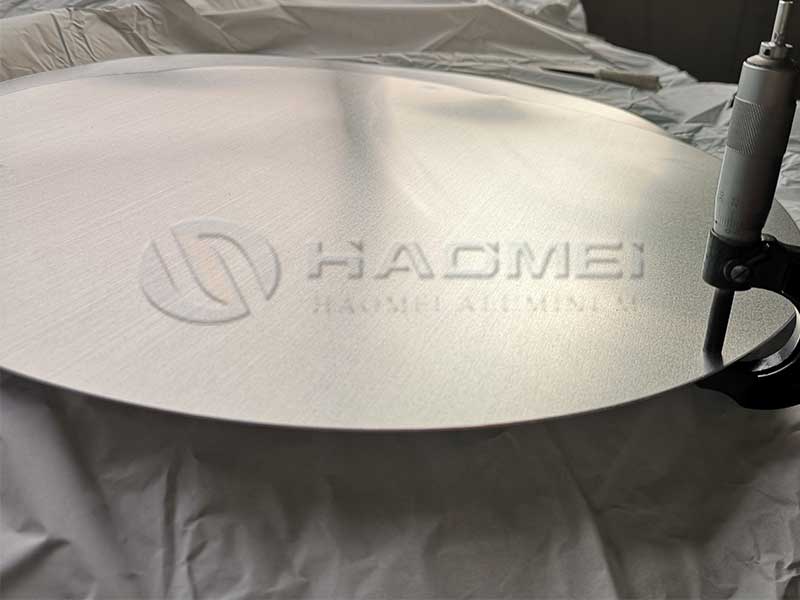2025-04-12 https://www.aluminum-coils.com/a/aluminium-circle-for-hard-anodize-and-nonstick-coating.html
Aluminum Circles: Innovations in Hard Anodizing and Nonstick Coating Applications
In the realm of advanced materials, aluminum stands out as a uniquely versatile metal. Amongaluminum products, aluminum circles present opportunities that extend far beyond traditional uses in cookware. When it comes to industries requiring durable, precise, and high-quality components, the role of aluminum circles cannot be understated. Particularly, these circular disks find invaluable applications in hard anodizing and nonstick coatings, making them essential for manufacturers and consumers alike.
The Science Behind Aluminum Circles
Before appreciating their applications, it’s crucial to understand what aluminum circles are and how they differ from other aluminum products. ASTM standards guide the production of aluminum circles, generally specifying grades between 1050 and 6000 series alloys. Aluminum circles typically measure between a few inches to several feet in diameter, offering adaptability for a myriad of applications. Their manufactured flatness and consistency allow industries to achieve high precision, which is fundamental when subjected to further processing like stacking, forming, or coating.
From my perspective on the factory floor, the aluminum circle destined for hard anodizing and non-stick coating demands a different level of scrutiny than our other products. The tolerances are tighter, the surface finish needs to be exceptionally smooth and consistent to ensure even coating adhesion, and the alloy itself is crucial. We often see issues with inconsistent grain structure leading to uneven anodizing thickness or non-stick coating defects. Dealing with those rejects is a constant headache, costing both time and materials. We've found that pre-treatment processes are absolutely vital - a meticulously clean and properly etched surface is the foundation for a superior final product, impacting everything from the final color depth of the anodize to the longevity of the non-stick coating. Even slight variations in our cleaning or etching lines can cascade into major problems down the production line.
Personally, I find the interplay between the aluminum alloy's properties and the subsequent coating processes fascinating. For instance, a higher purity aluminum might seem desirable, but it can sometimes lead to weaker bonding with the anodize layer. Finding the sweet spot for alloy composition, surface preparation, and coating parameters is a constant challenge, requiring close collaboration between our production, QC, and R&D departments. We're constantly experimenting with new techniques and analyzing results to improve our yields and produce a superior product that meets the increasingly demanding specifications of our customers, who are always looking for longer-lasting and more durable non-
Hard Anodizing: Enhancing Durability
Hard anodizing refers to an electrochemical process that increases oxide thickness on aluminum surfaces. This process enhances the surface hardness, wear resistance, and fatigue strength of aluminum circles. When produced as a hard-anodized finish, aluminum circles resist scratching and corrosion, making them ideal for applications that undergo perpetual wear and tear, such as automotive and aerospace components.
For instance, manufacturers use hard-anodized aluminum circles to create machinery components and tooling fixtures, where toughness and durability are non-negotiable. They also play a pivotal role in architectural applications, punctuating modern designs with both form and function. The enhanced thermal conductivity that accompanies hard anodization further elevates overall performance, allowing aluminum products to excel even under high-temperature conditions.
Nonstick Coatings: Culinary Innovation
On the culinary front, the nonstick coating on cookware represents another groundbreaking application of aluminum circles. Here, aluminum's excellent heat conductivity combines with a fundamental shift in consumer cooking preferences. Nonstick surfaces facilitate healthier cooking by requiring less oil or fat, making them ideal for fitness-conscious consumers. The process usually involves applying a layer of PTFE, ceramic, or other proprietary compounds on an aluminum circle with nonstick qualities.
Anodized aluminum circles serve as an excellent base for nonstick coatings, providing stability and enhancing the lifespan of cookware. The integration of these coatings with aluminum significantly reduces the chances of warping during cooking and ensures easy cleaning—a quintessential feature in today’s busy kitchens. When resealing is added to the process, consumers benefit from extended durability and performance reliability, further amplifying the popularity of aluminum circle products.
Technical Considerations: Addressing Challenges and Innovations
While the advantages of aluminum circles are clear, the technical challenges associated with hard anodizing and nonstick treatments can illuminate potential areas for innovation. One challenge is ensuring the uniform thickness of coatings during hard anodization, which can influence product performance significantly. Innovations in monitoring technologies emerge, providing real-time data that ensures precise coating applications.
Additionally, while developing nonstick coatings, finding the right balance between scratch resistance and wear issues can present difficulties. Sustainable development is another technical consideration as manufacturers seek coatings that not only perform excellently but also minimize environmental impact during production and disposal.
Future Perspectives
As past manufacturing trends usher in more refined processes and optimized materials, the future of aluminum circles in hard anodizing and nonstick coatings remain highly promising. The demand in the consumer cookware market remains strong as health and lifestyle choices prioritize efficiency and performance. Aerospace and automotive innovations can point to aluminum circles becoming more ingrained in critical applications—supporting advancements in technology and performance.

